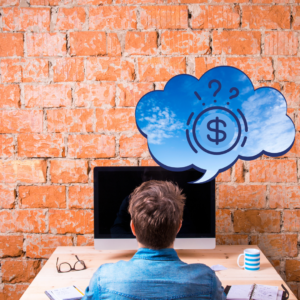|
Goodwill, or 'blue sky,' is probably the most misunderstood component of business valuation. Business owners are often curious about goodwill in their business and how it is valued, and they are also often confused. In their minds, the intangibles including renown of the business, the years of successful business operation, their client list, their trained staff, their reputation, their brand or customer experience are all valuable as the "blue sky" or "goodwill" and are reason enough for a buyer to pay the asking price that supports the number needed in their retirement plans. There is typically no mal intent in this, just misinformation. |

|
In reality, the business enterprise as a whole has a value comprised of tangibles, intangibles, and the profits/cash flows these assets can generate. While goodwill is intangible, it IS a calculable number, not an estimate to get to a desired conclusion.
In the final analysis of a business valuation report, goodwill is based upon the earning capacity of the business. Whether goodwill exists at all, and its value, rests upon the excess of the company’s net earnings, over and above a fair return on the net tangible assets of the business.
So now that you know goodwill can be calculated, want to see how it is actually quantified?
Every business has a balance sheet that includes tangible assets—assets that are easily measurable such as Accounts Receivable or Inventory; or actual physical items that can be seen and touched. For a manufacturer, it may include Accounts Receivable, Inventory, and Equipment. For a service business, it may include Accounts Receivable, Desks, and Computers. These tangible assets are then “put to work” to generate cash flows that make the business worth more than the value of just these tangible assets.
When you look at a company’s balance sheet it lists the assets (the “things” the business owns) and the liabilities (the “things” the business owes). When you subtract the liabilities from the assets you arrive at the company’s book value. However, it is important to remember that every asset is initially added to the balance sheet at its original cost, not at its current value. Therefore, it is important as a first step to look at each of the assets listed and restate each one to its current, market value. Then, subtracting liabilities from the restated market values of the tangible assets provides you with the adjusted book value. Set this number aside–we’ll use it in a minute.
The next step would be to measure how well this particular business is able to put this balance sheet to work to generate net earnings/cash flows. We do this by valuing the business enterprise by projecting the company’s expected revenues, expenses, needed capital expenditures, and cash flows needed for working capital. We arrive at the value of 100% of the business enterprise after discounting these cash flows back to the date of valuation and applying appropriate discounts and premiums relating to the specific company and block of equity. This results in the value of the business enterprise.
Taking this enterprise value (the present value of future cash flows generated by the business) and subtracting the adjusted book value (the market value of tangible assets less liabilities) provides the answer to two key questions: Is there goodwill? And if there is, how much?
Sometimes, the enterprise value is lower than the adjusted book value of the business. This means there is no goodwill (intangible value) in the business. This can be an indication that the business is worth more in liquidation than it is as a going concern.
If indeed the renown of the business, the years of successful business operation, their client list, their trained staff, their reputation, their brand or customer experience, or other such intangibles DO have value, it will be reflected in, and quantified by, measuring the net earnings/cash flows the business is able to generate using these intangibles.
For a simple example: We determine the fair market value of a business enterprise is $4.5 million after determining the present value of future expected cash flows. We then go to the balance sheet and restate the assets to their respective market values to determine the adjusted book value (assets restated to market less liabilities) of $2.0 million. This would tell us this business has $2.5 million in goodwill.
Goodwill is indeed measurable.
Because there is some complexity involved, plus the mental hurdle for some people that you actually can determine and allocate value to something you can’t physically see and/or touch, it is easy to see why this topic can be misunderstood. However, the value of goodwill is actually quite clear once you have a professional business valuation completed that considers all the qualitative and quantitative factors of a business enterprise.
The key takeaway: goodwill is much more than a plug in a retirement plan, it is an important and carefully calculated part of a business value conclusion.
Have questions about your clients’ goodwill and business value? We’re here to help! Schedule a complimentary call as we are always happy to talk with you about a current situation you are currently working on.

Cathy is a principal of Capital Valuation Group, Inc., headquartered in Madison, WI. Capital Valuation Group has been helping business owners across the country understand, increase and unlock the value of their businesses for over 45 years through keynote speaking, valuation analysis, determining damages and providing expert witness testimony. Cathy welcomes conference and event speaking inquiries and can be reached at cdurham@capvalgroup.com.
